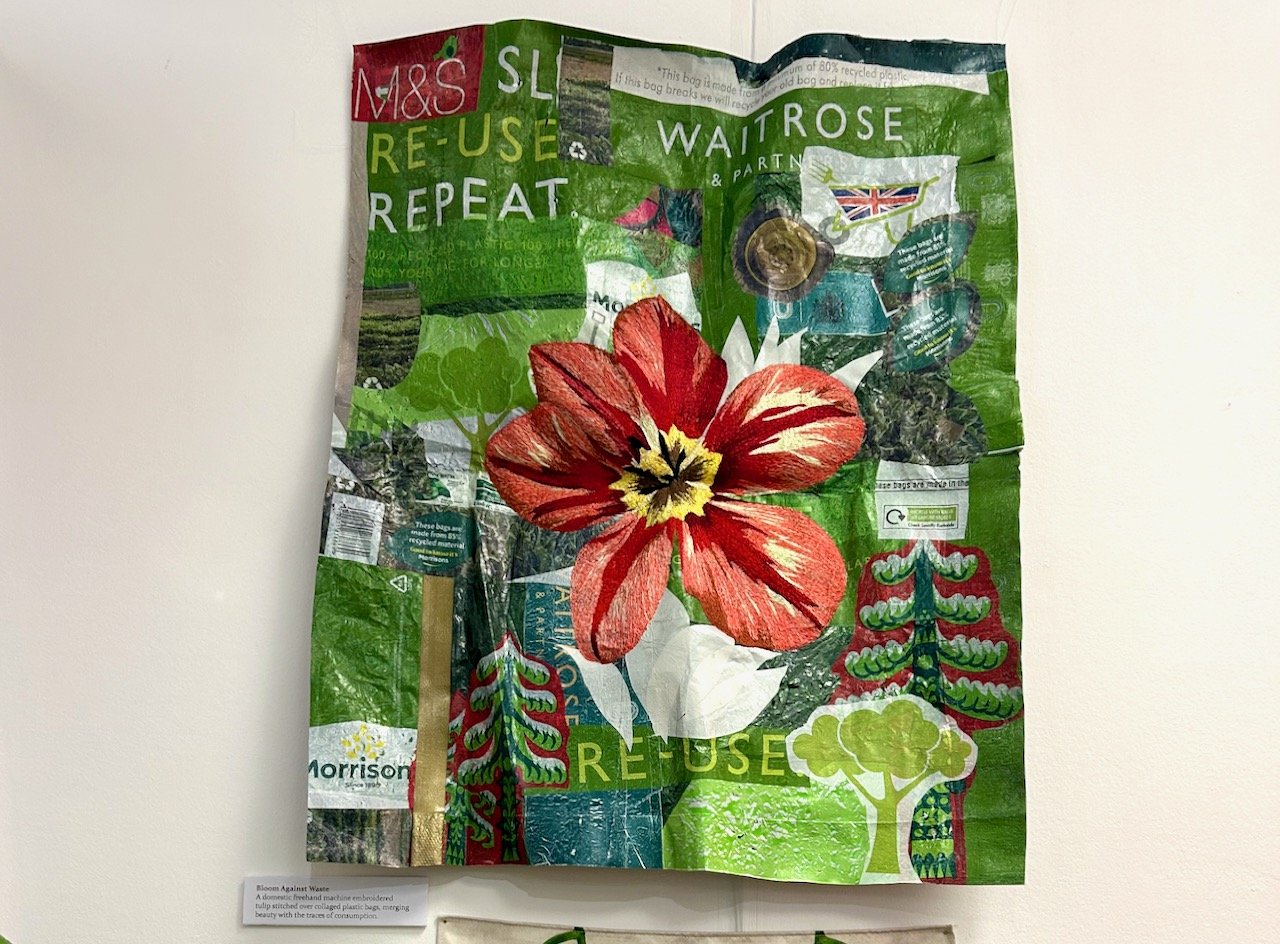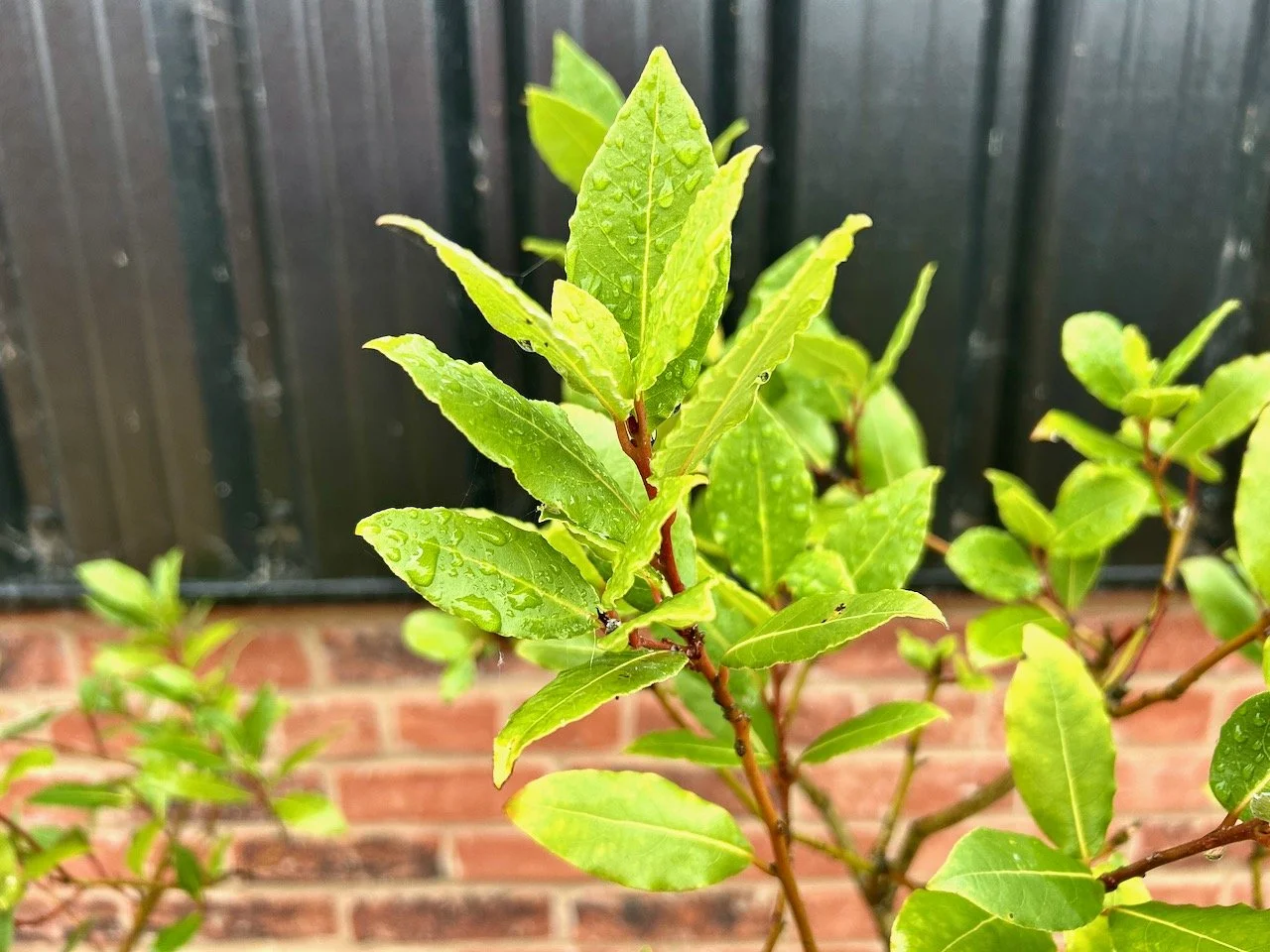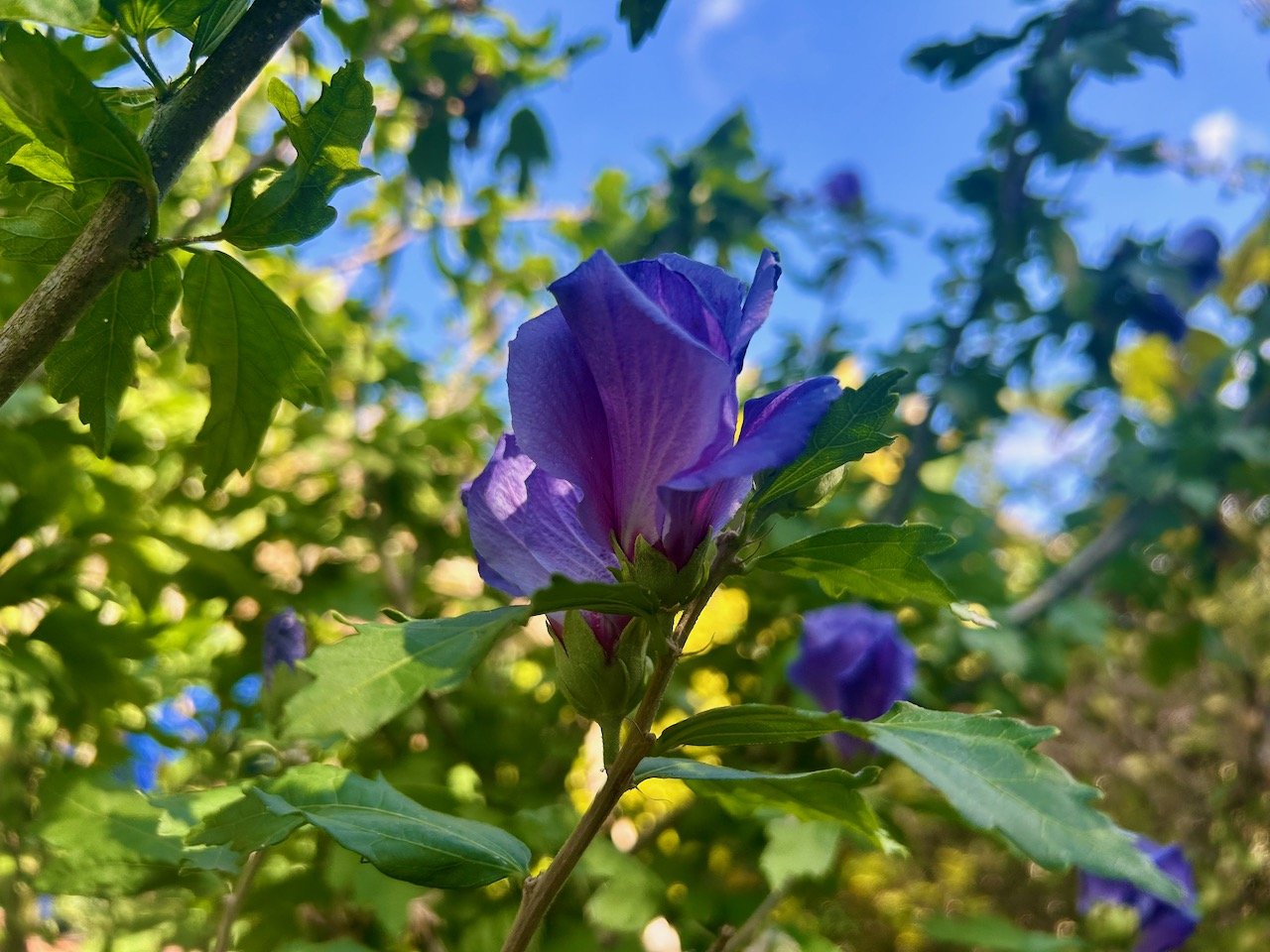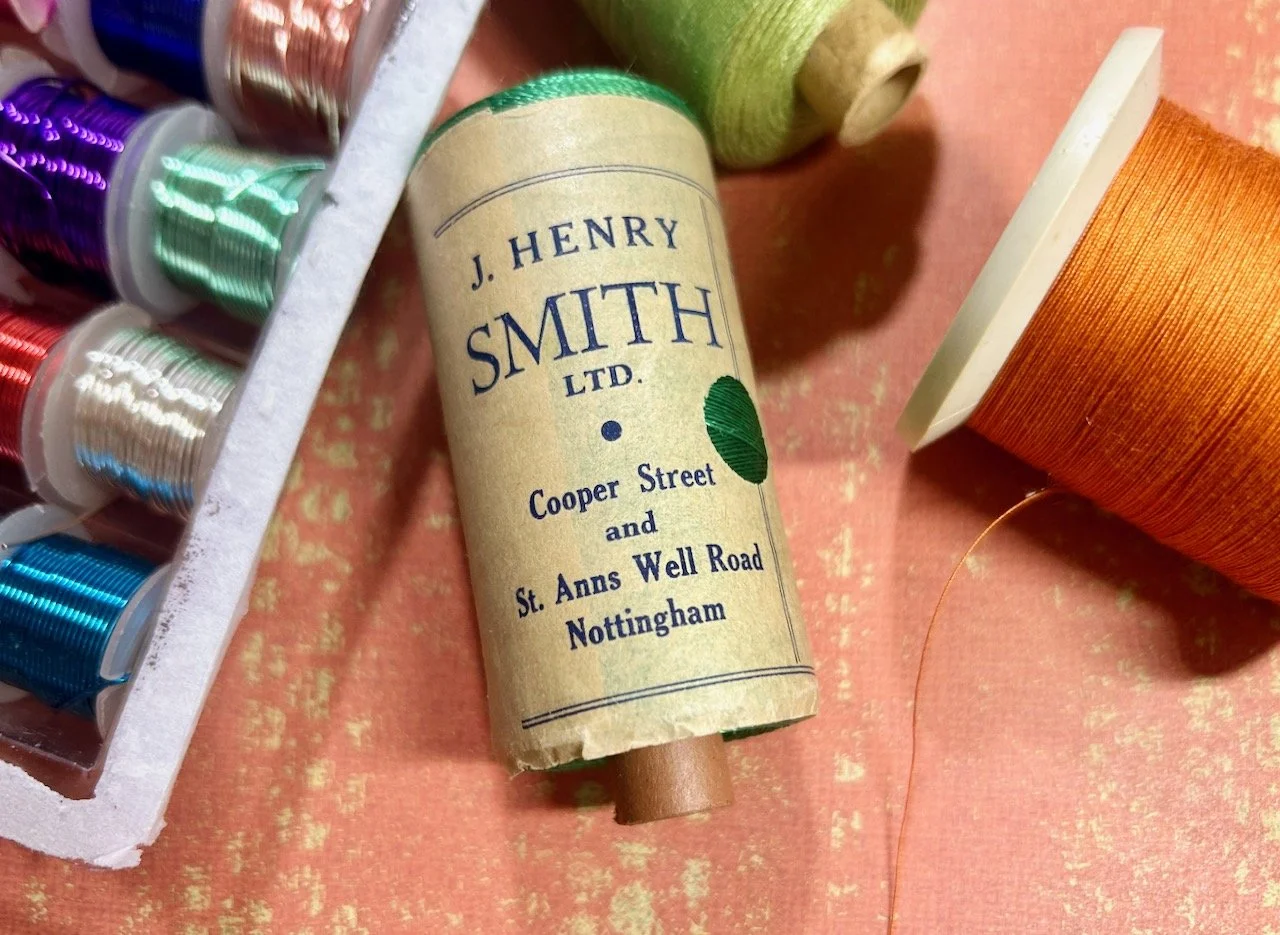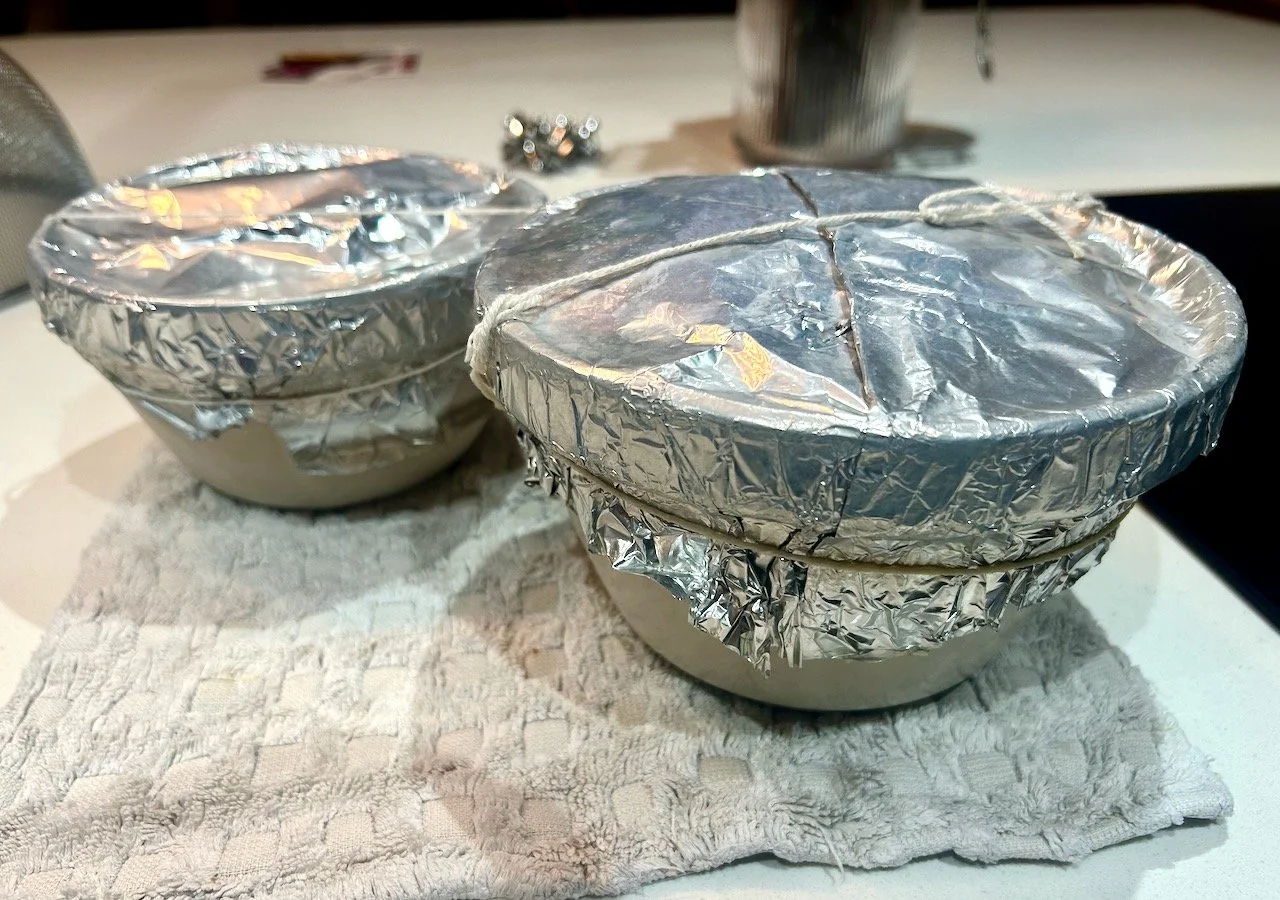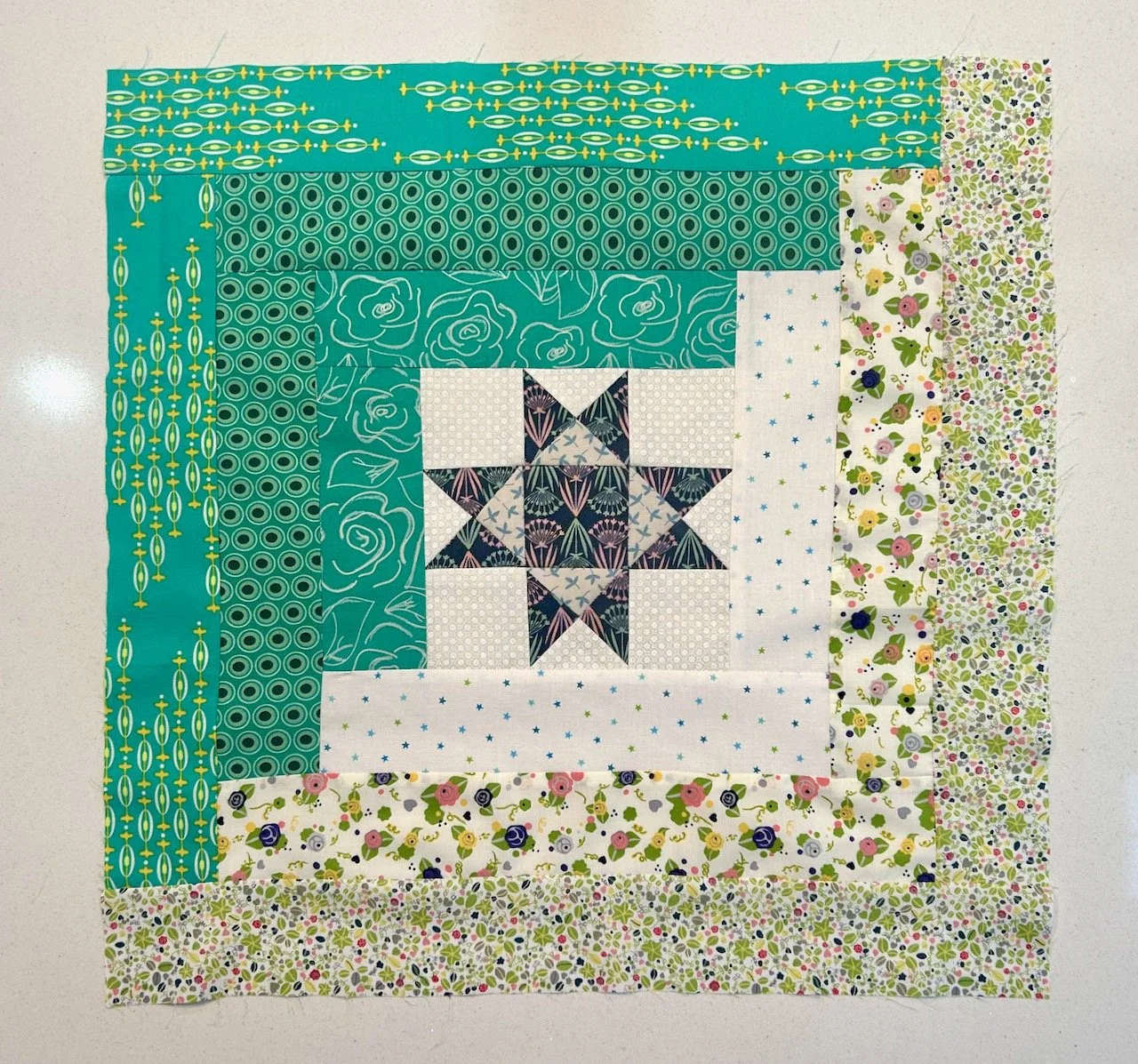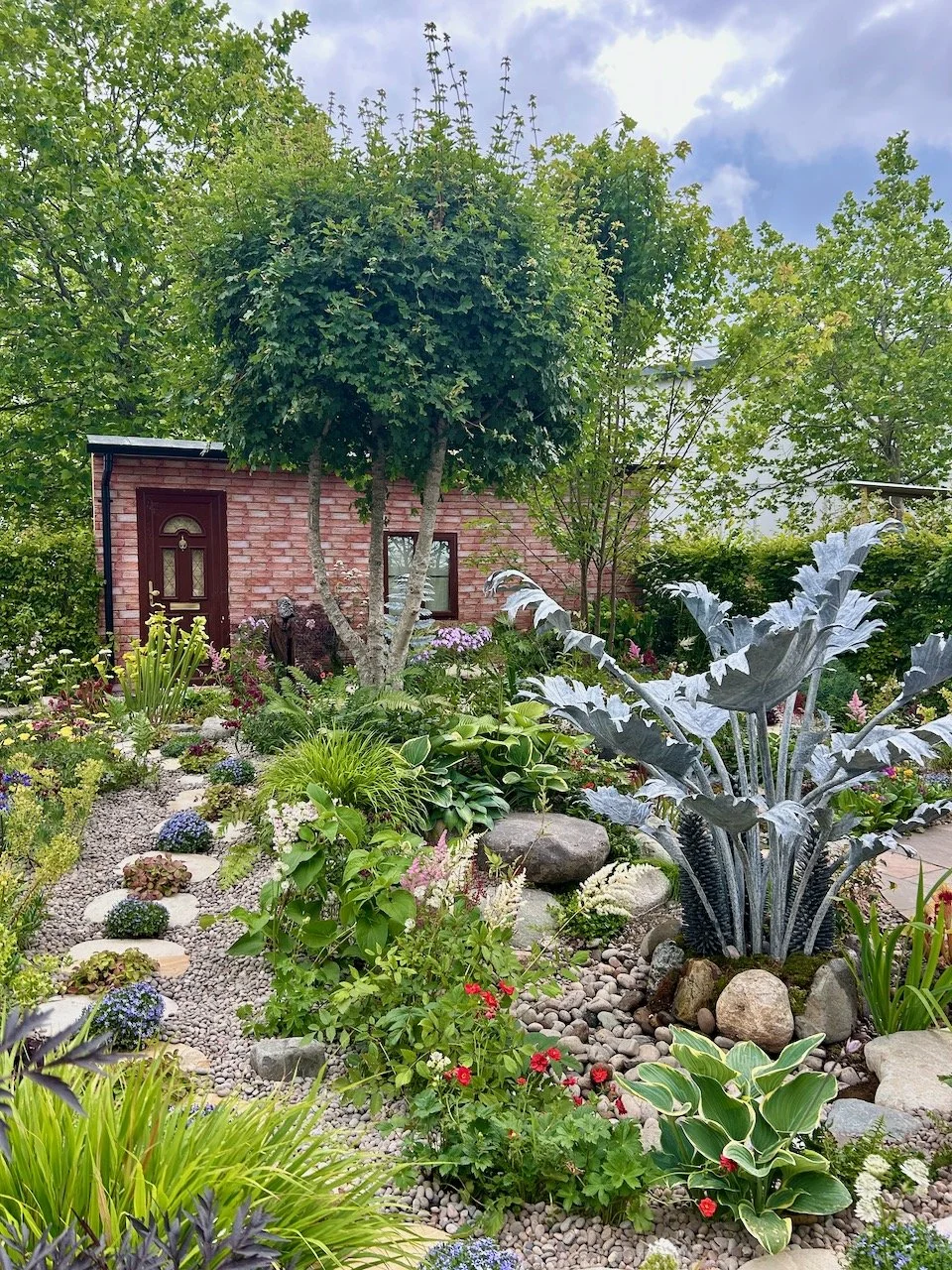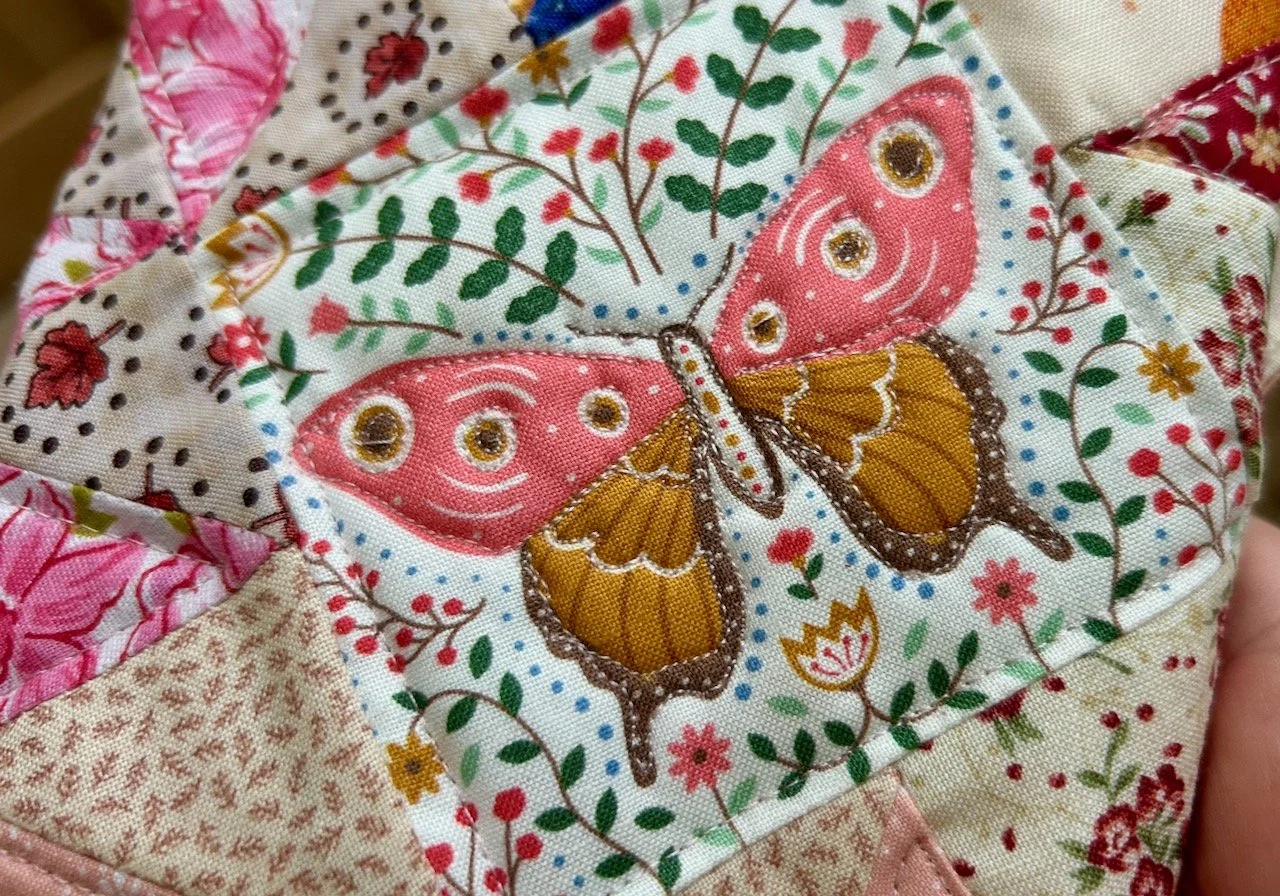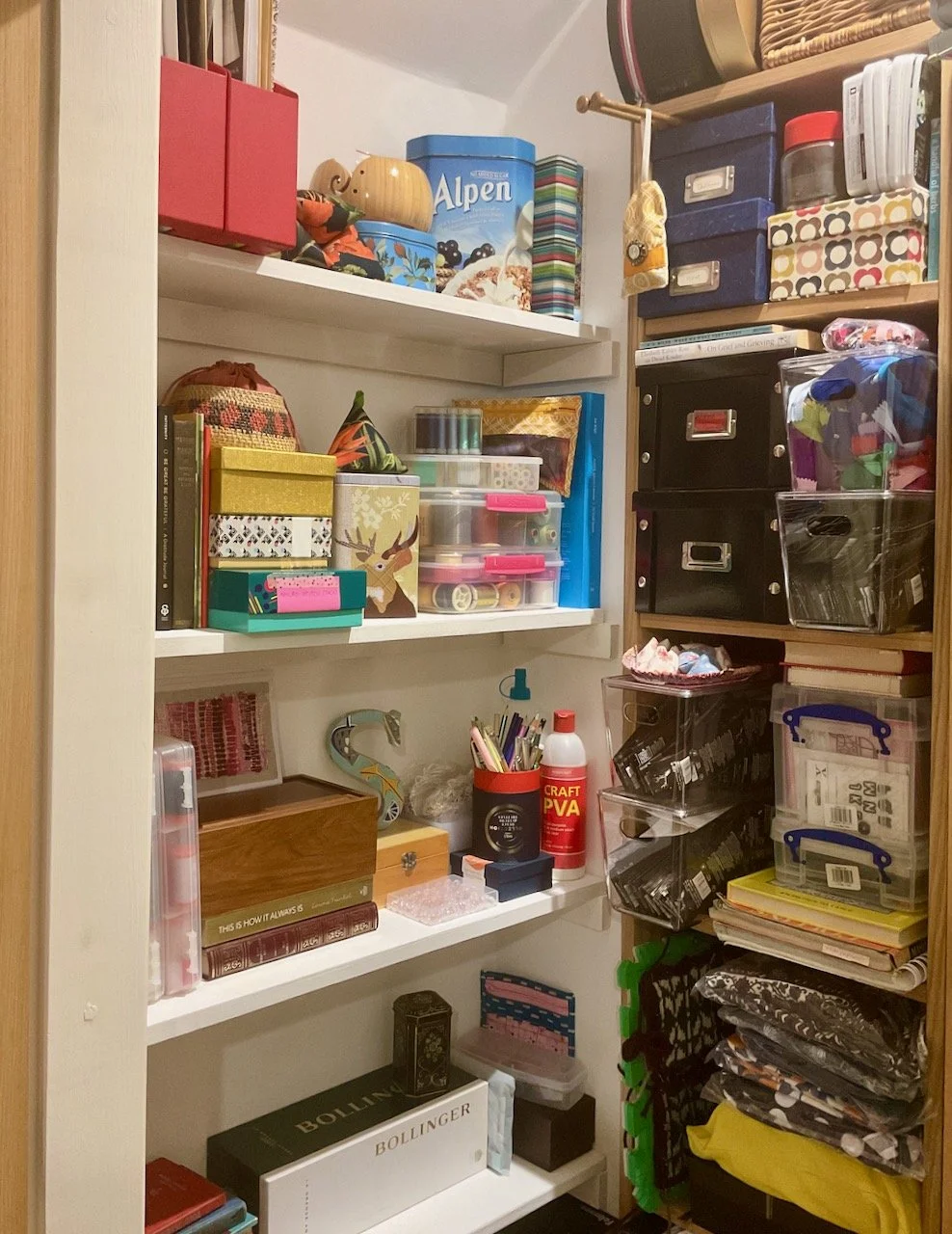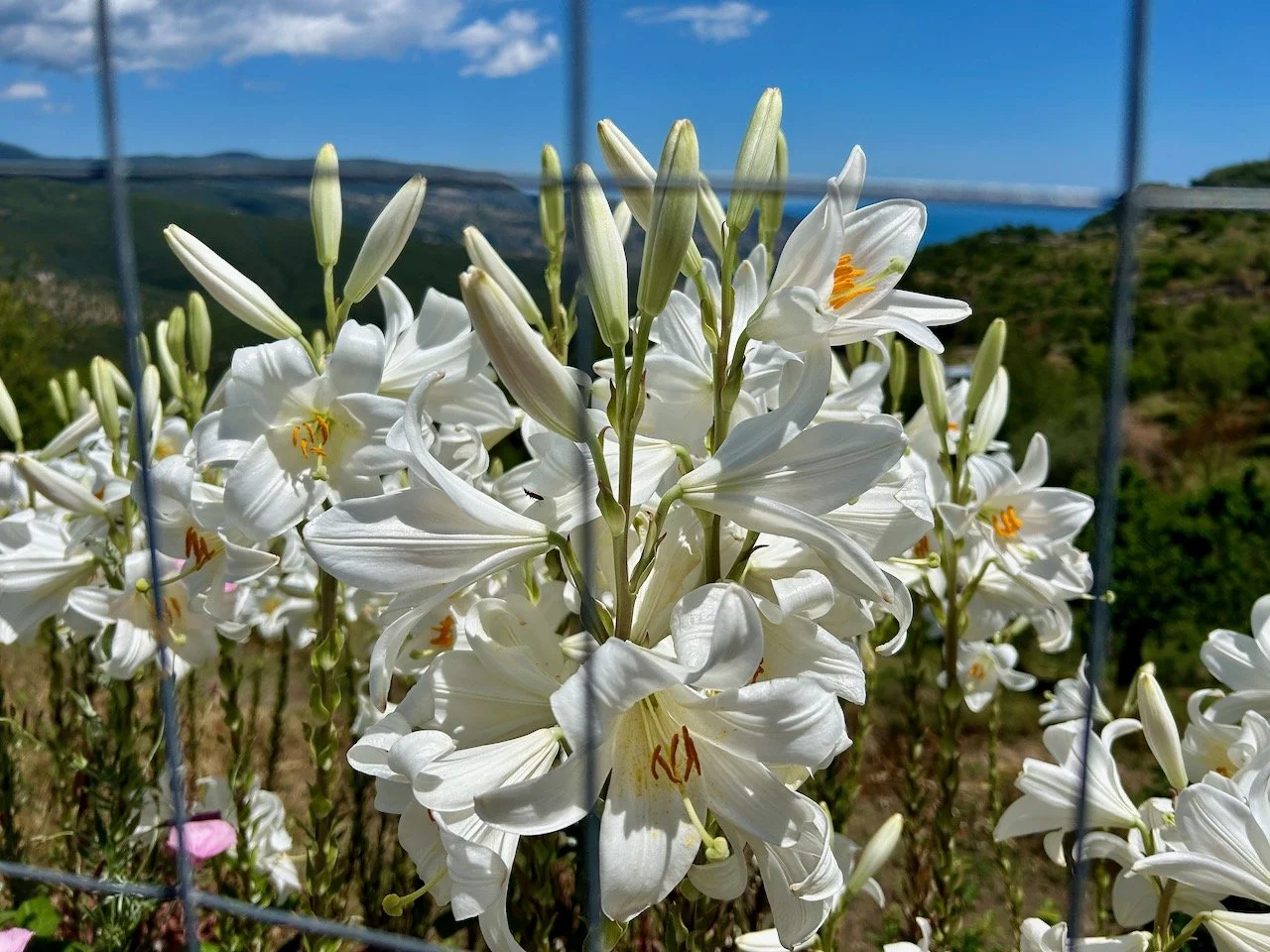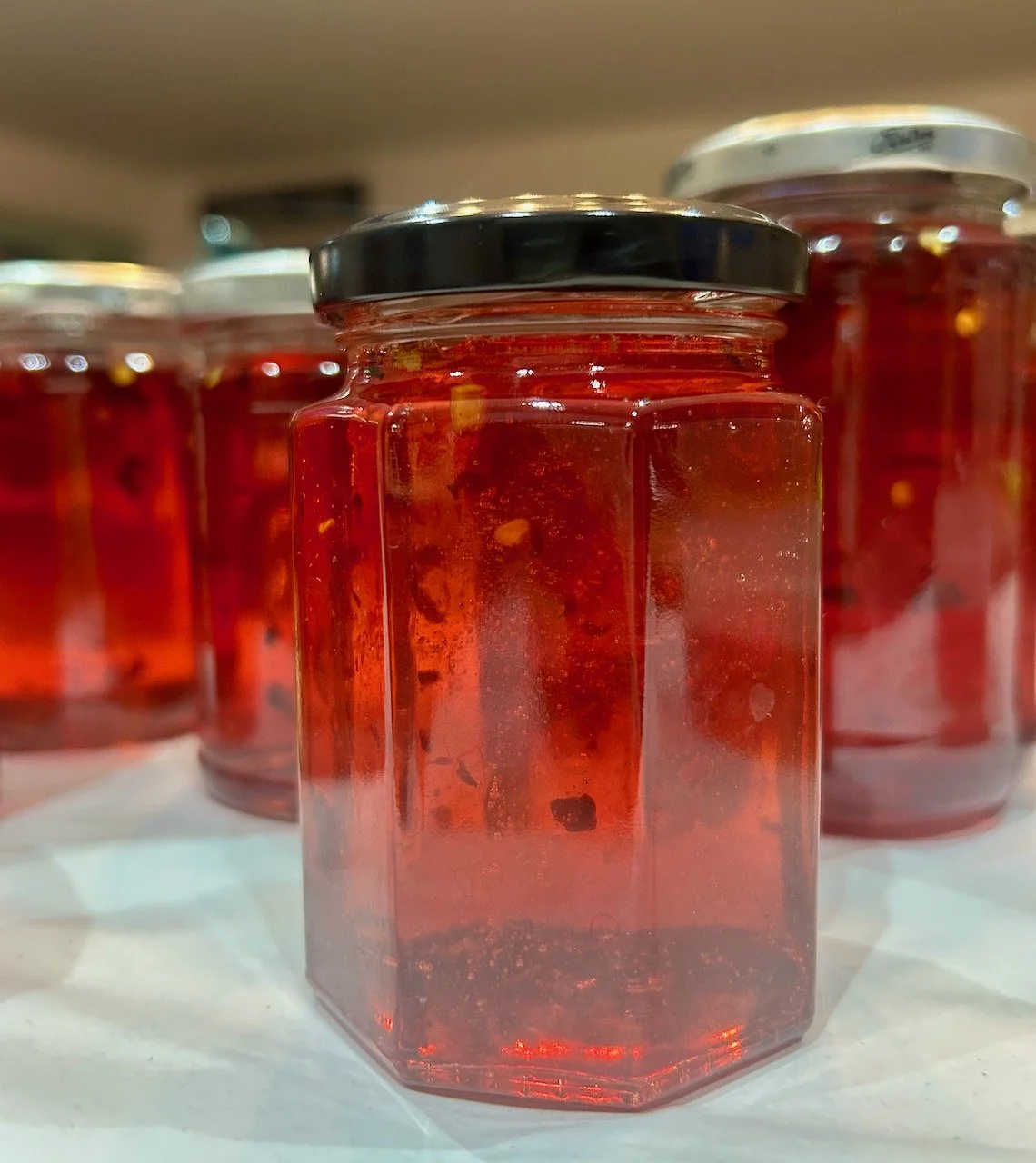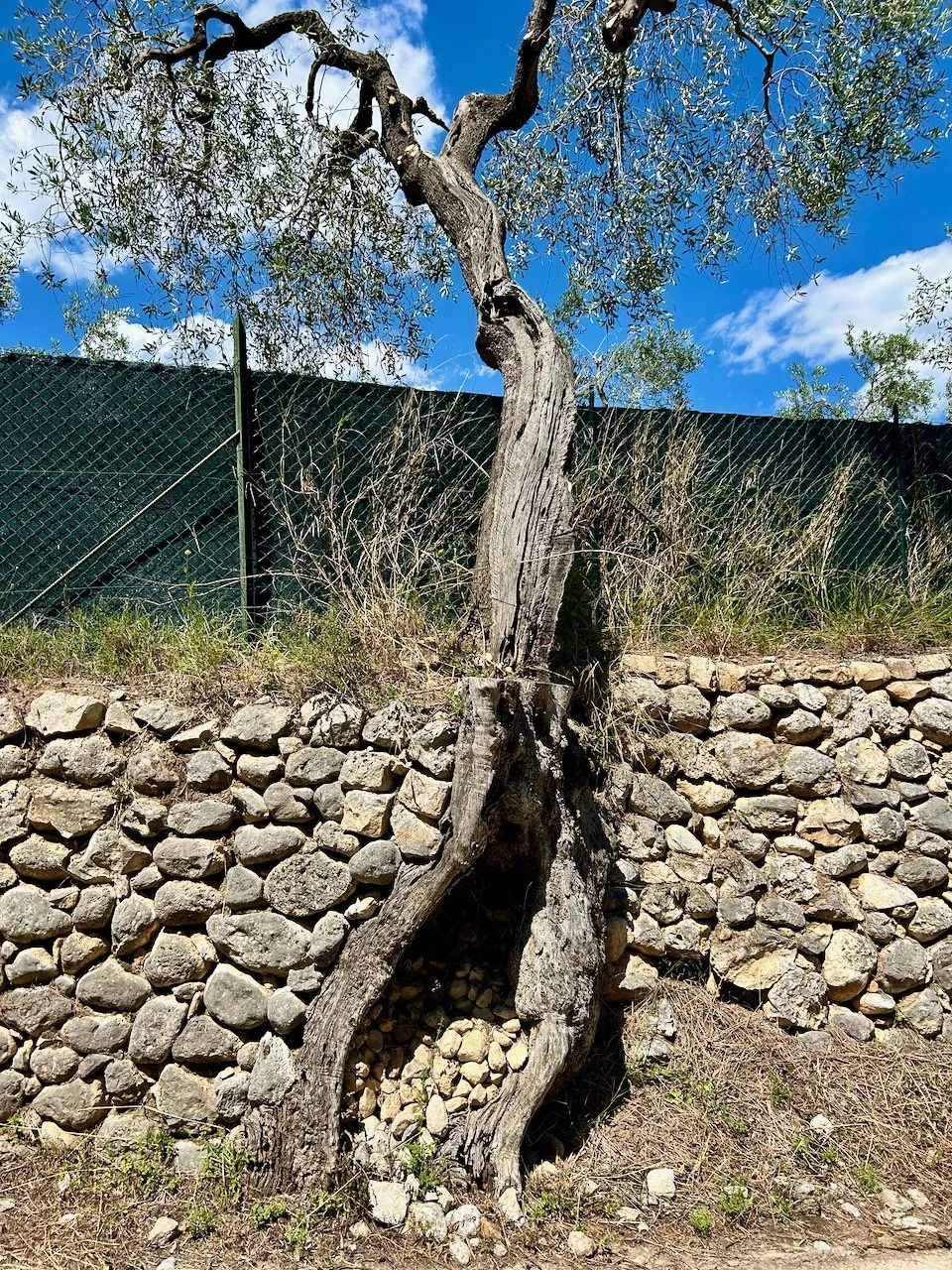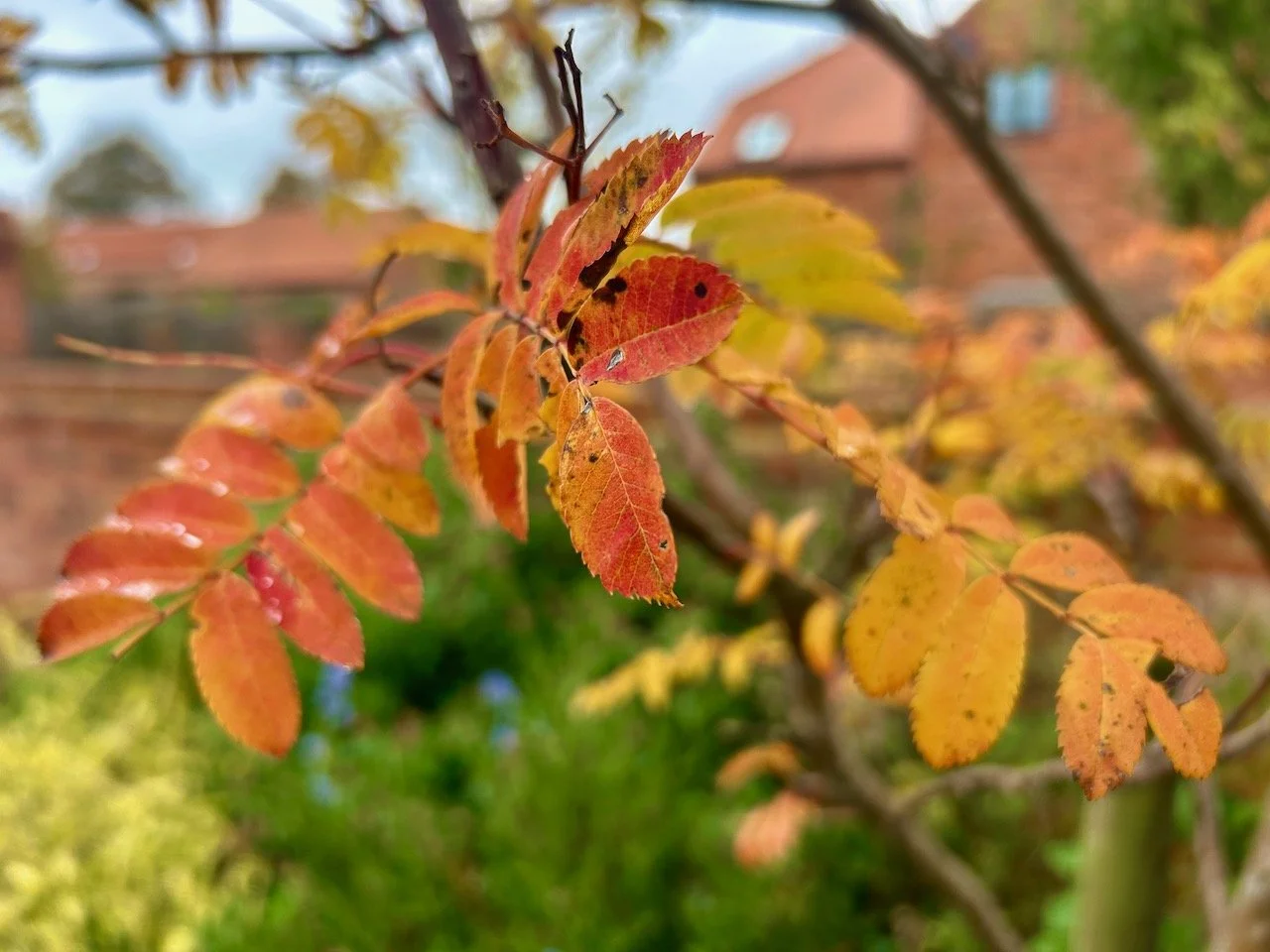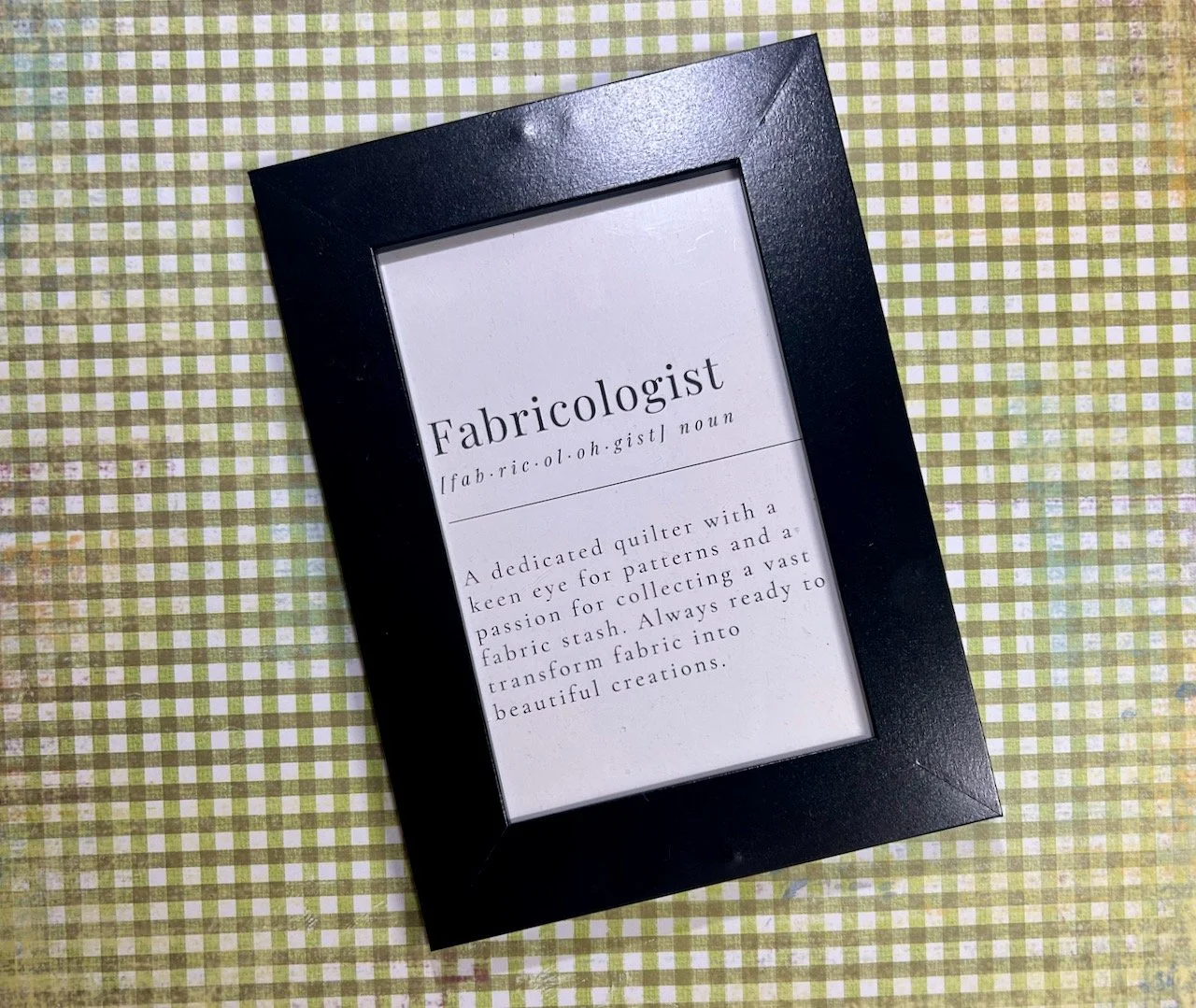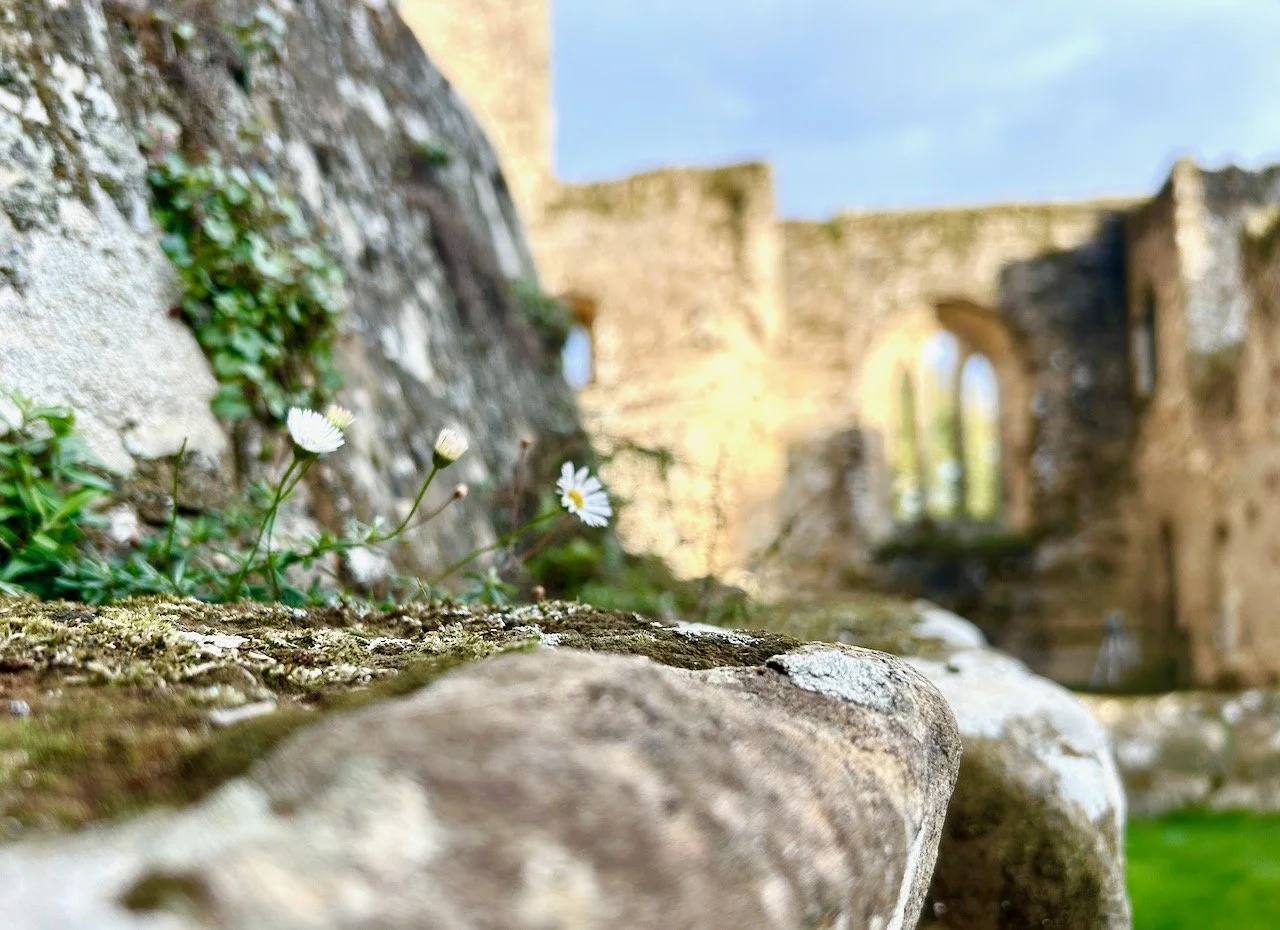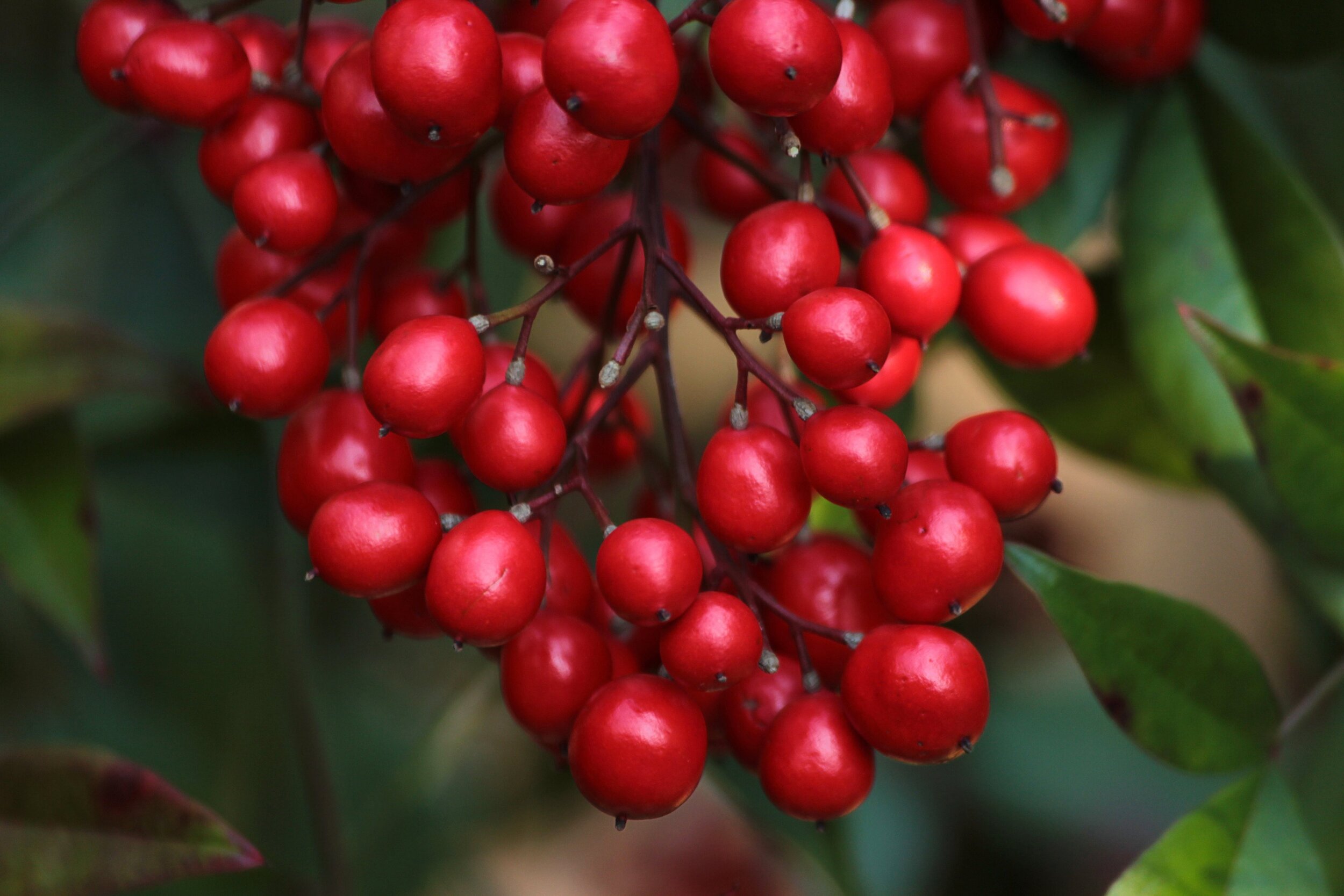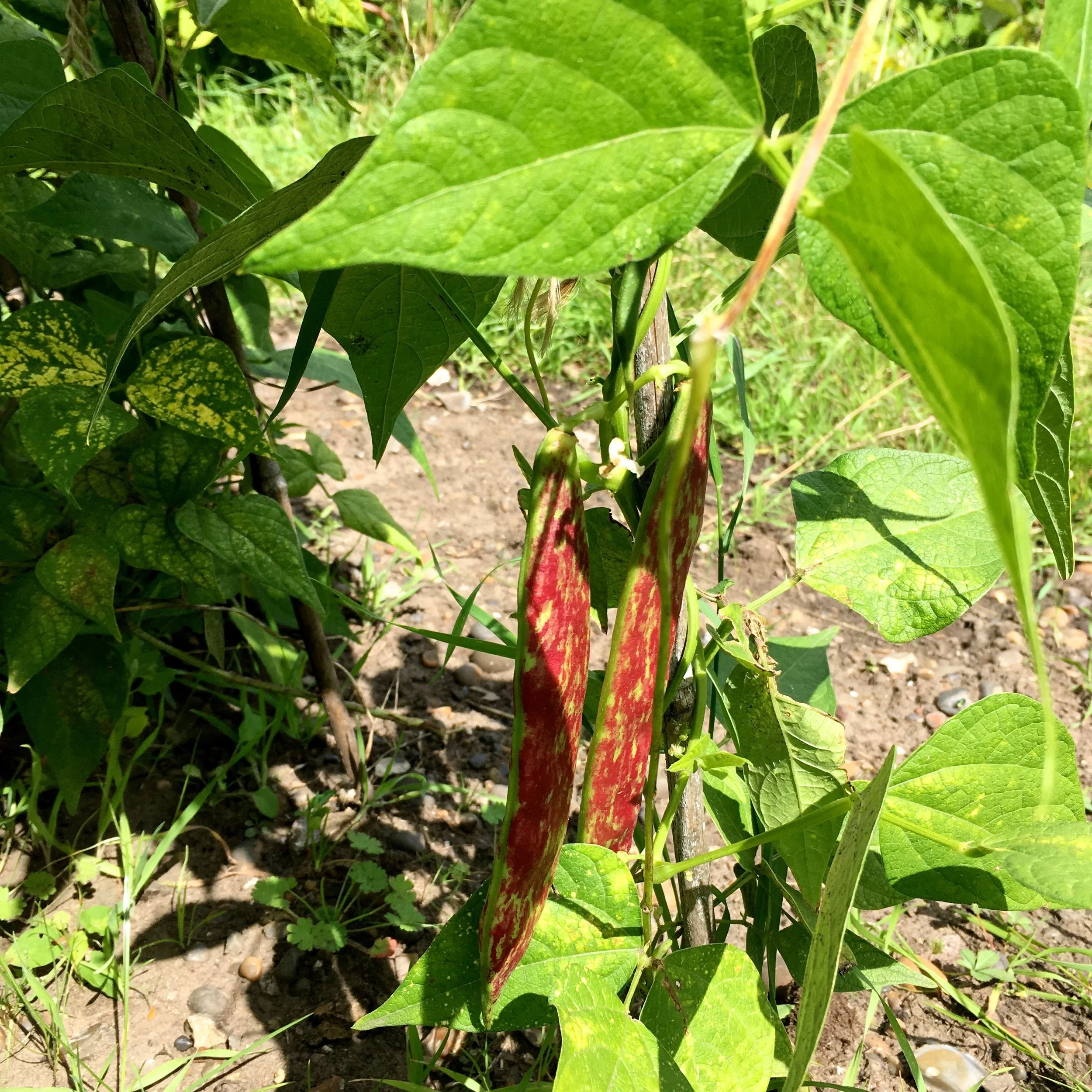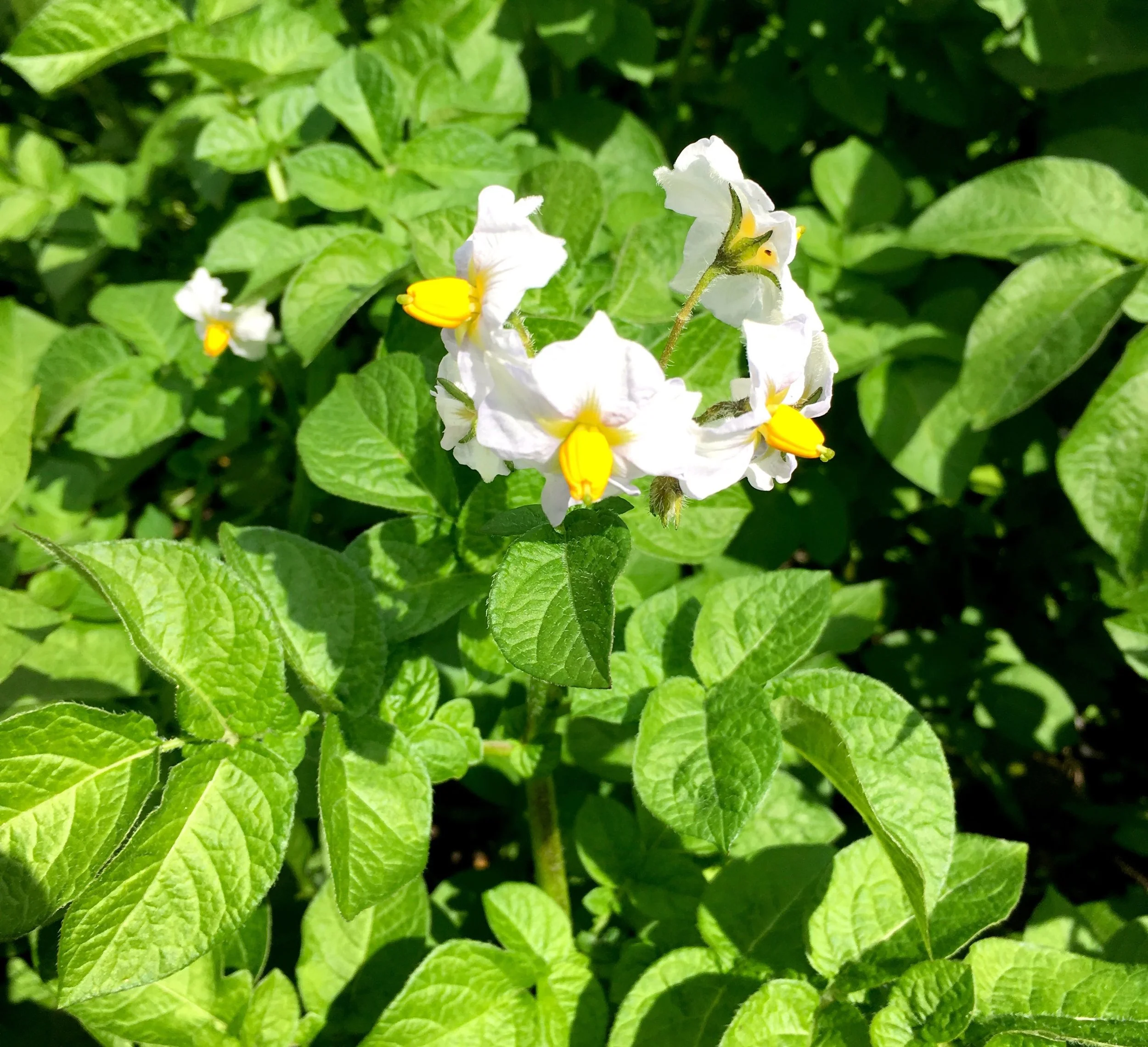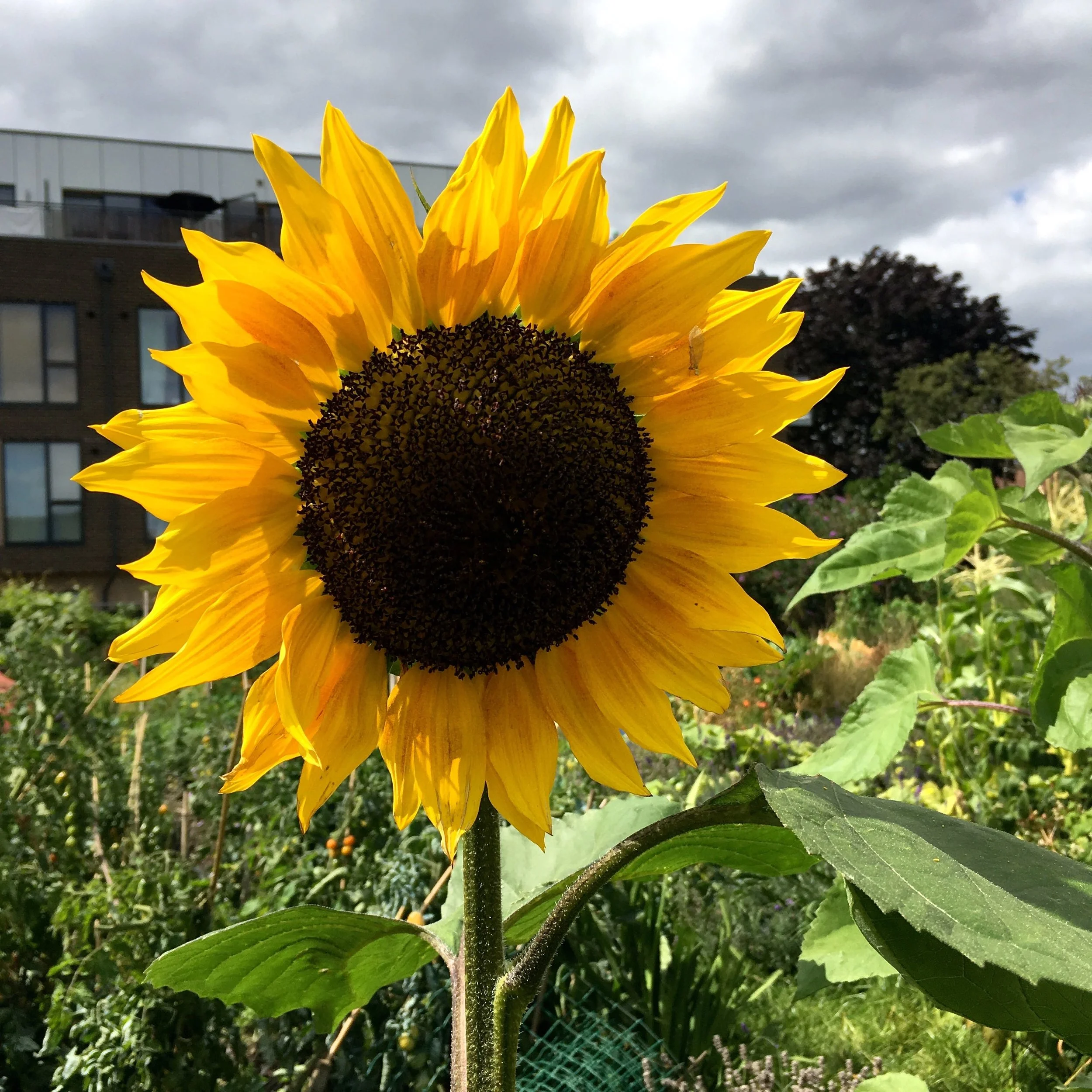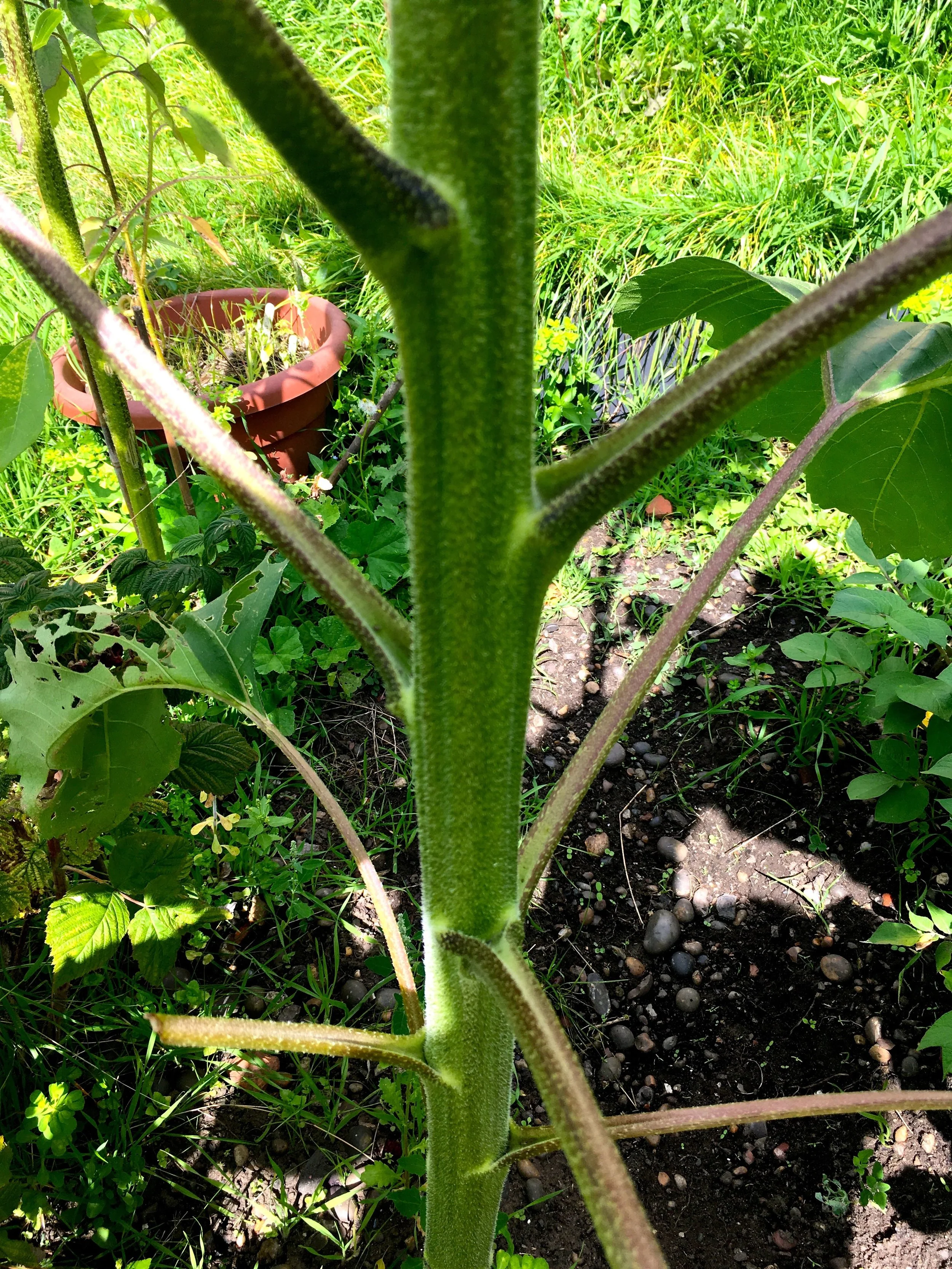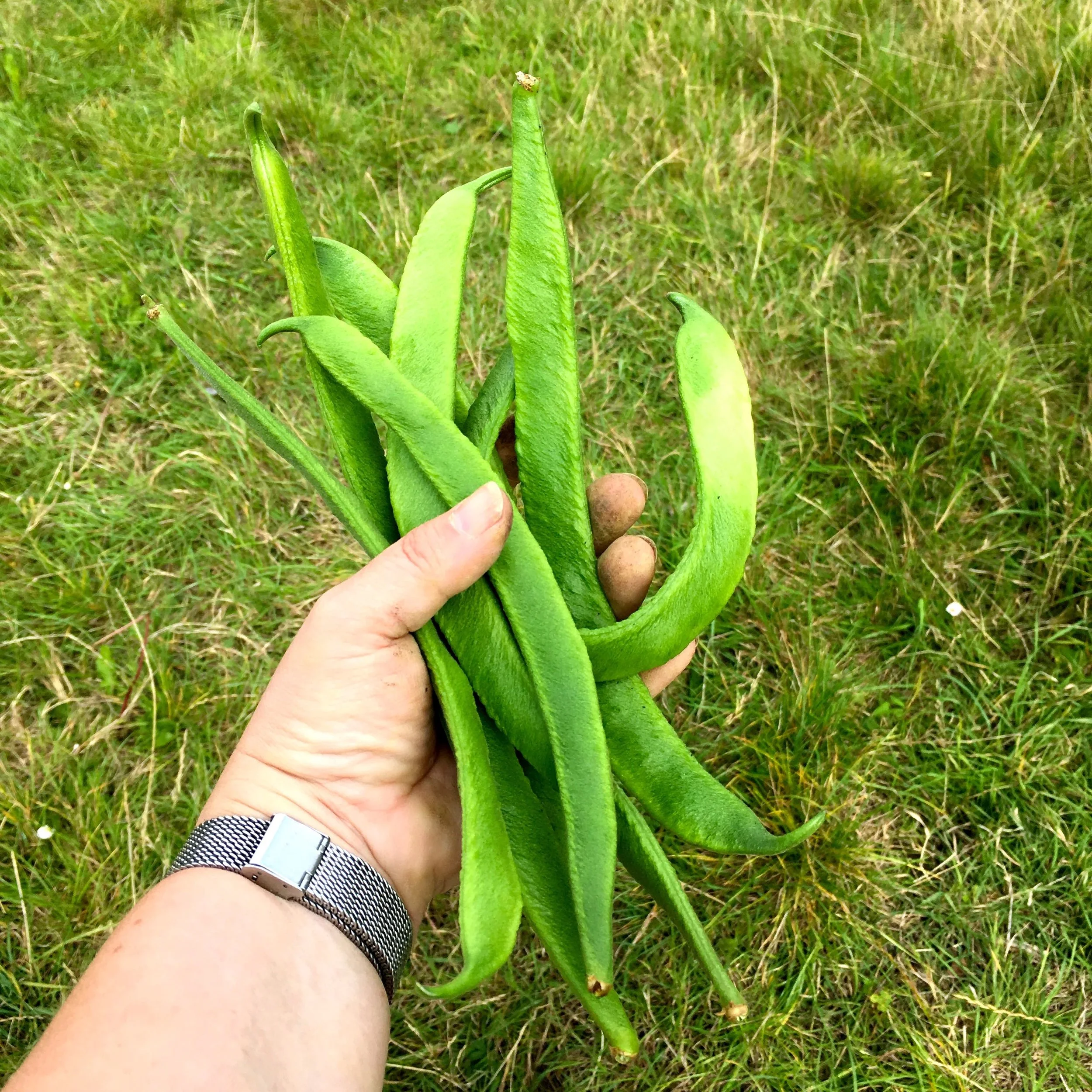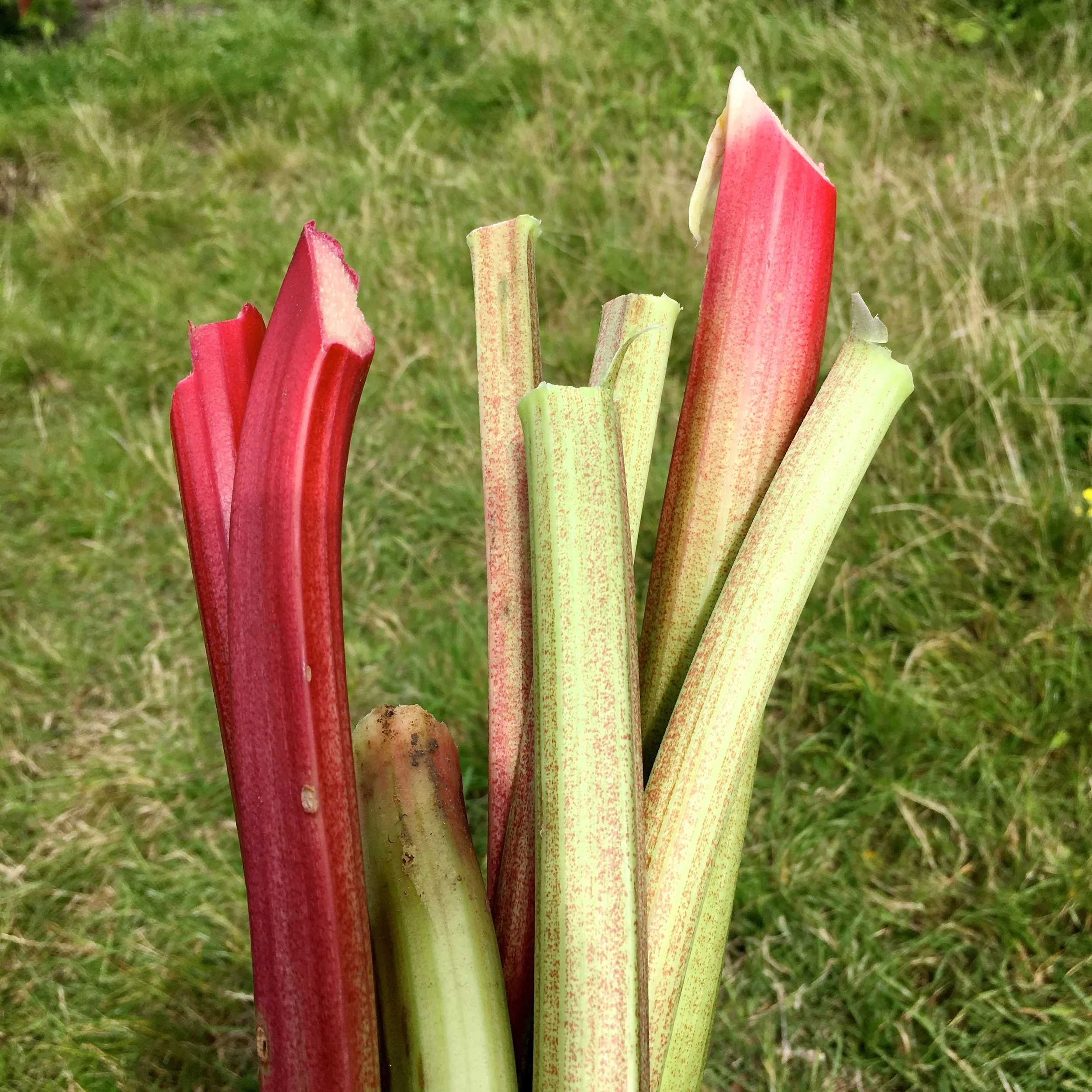* I was invited to the press preview of Unearthed: The Power of Gardening a day before it opened to the public, there was no obligation to share this on my blog (but I am) and as usual my views and opinions are very much my own.
An exhibition about gardening at the British Library, that alone had my interest piqued - and while I wasn’t quite sure what to expect, what I did see went way beyond any expectations I had. I travelled down to London on a much earlier train than usual, ready to be there for the 10am start time. Luckily it was another glorious day, and the train was on time so I had some time basking in the morning busyness outside Kings Cross station, without needing to actually be part of the busyness myself.
The exhibition explores the transformative, enriching and sometimes radical power of gardening in Britain with historic manuscripts - some on display for the first time - and artefacts and artwork alongside contemporary material with captivating and immersive video throughout the four sections of the exhibition. It also looks at the impact of gardening on people, communities and the environment and the exhibition space is transformed to feel more like a garden shed than art gallery, but done in a way that’s in keeping with and enhances the story that unfolds through its four sections.
Gardening to nurture
Following the simple premise that if we care for our gardens, then they will care for us. Whether that’s growing food or herbal medicines, or simply as many gardeners have long known, the benefits of gardening for our mental health, simply put gardening is good for us.
It seems though we’ve long wanted to know more about gardening. This first printed gardening manual from 1564 is from a time when gardening developed into a recognised profession, so tools and techniques advanced and gardeners grew a wider variety of plants than ever before. This book was aimed at ‘ordinary’ gardeners explains how to dress, sow and set a garden.
THOMAS HILL, A MOST BRIEFE AND PLEASAUNTE TREATISE, LONDON, 1564
The annotated plan, for John Eveyln’s garden at Sayes Court in London, shows the many kinds of tree that were available to the wealthy gardening - 12 varieties of cherry tree, 21 varieties of dwarf pear tree. The notes also show that he planted Golden Pippin apples, damsons, apricots and vines against the garden walls, a plan he devised after a severe winter in 1683-4 which destroyed many of his plants.
PLAN BY JOHN EVELYN OF PART OF THE GARDEN AT SAYES COURT, LONDON, 1685
There’s a series of short films showing throughout the space, produced in collaboration with Coco Collective, which explore the links between food growing and wellbeing practices, and consider gardens as a way to reclaim space and build community. The final film examines the legacies of empire on plant cultivation and the importance of embracing ancestral knowledge - a subject which I’d never considered before. All of the films though are powerful and its worth spending the time to watch them the whole way through.
Gardening together
We know that gardening can bring people together, empower communities and transform our neighbourhoods and gardening has long been part of social and political movements and this is covered well in the exhibition. I learnt of the importance of cabbages and how they were a resistance to land enclosure.
Between the 1600s and 1900s enclosure acts fenced off common land, and so it was more difficult for the poorest in society to graze animals and grow food. In 1906 a group of unemployed men planted cabbages on unfenced church land in Manchester to raise awareness of the poverty they were facing.
As land was enclosed and cities grew allotments emerged as a way of providing green space for those living in newly industrialised cities, and as we know allotments remain sought after today. Today they are often a garden away from home, to grow all sorts of plants and to relax and foster a sense of community, much more than their first intended use for simply growing food.
PIERRE LEVEQUE DE VILMORIN, ALBUM VILMORIN, PARIS 1850
And why cabbages for the land reclamation protests? They’re nutritious and can be harvested all year round, they can be eaten fresh or easily preserved. Cabbage really is king, and I was more than happy to admire this large artwork of a cabbage, and ponder about the connection to my ‘cabbage crockery’ back home.
Gardening and global exchange
Our garden plants tell a global story, and one I think we often forget. Tulips originated in Persia, and were in gardens of the Ottoman Empire in the 900s before arriving in Britain in the 17th century, where they became an instant hit.
When we move house we usually take our favourite plants, or at least cuttings of them with us, but in the days of the British Empire the movement of plants became a colonial programme, often relying on local expert knowledge and, at worst, depending on enslaved people’s labour. This changed our gardening landscape forever and gardeners today are making sense of these tangled roots and addressing gardening’s colonial past and connections.
JOHN GERARD, A GENERALL HISTORIE OF PLANTS. LONDON, 1597
Potatoes which are a staple of our gardens and allotments were first brought to Europe in the 1500s, from Peru and Bolivia, by Spanish colonisers. It’s strange to think that Europeans were initially suspicious of what is still such a staple today; their suspicions were because it belonged to the poisonous nightshade family, then the sweet potato was more commonly eaten. The first English description of a potato appeared in John Gerard’s herbal in 1597.
Much work was undertaken to record plants, and botanical illustration still plays an important role in plant identification. At the exhibition one of the finest botanical works ever produced, The Hortus Eystettensis (1613) is on display for the first time. It captures on paper one of the finest botanical gardens in 17th century Europe, reconstructing Prince-Bishop of Eichstatt’s garden in Bavaria.
BESILLIUS BESLER, HORTUS EYSTETTENSIS, ALTDORF, 1613
It’s not a small book, and the picture above is deceptive - it’s easily comparable to A3 in size - but if every page is as beautify as the sunflower that I saw, then it truly is an amazing piece of work. For the first time, every flower, herb and vegetable in a single garden was captured in rich detail, with some copies lavishly hand-coloured. The Hortus Eystenttensis revolutionised the representation of plants and is considered one of the finest botanical works ever produced, and I feel very fortunate to have seen this.
Pineapples were another instant hit when the fruit reached Europe with gardeners pushing technological and horticultural boundaries in a race to discover how to grow them in our cooler climate. Orangeries were not hot enough for tropical pineapples. A breakthrough came in the 1720s when they discovered that the plants would fruit in pits of horse manure and decomposting wood bark, which generated heat, and then ripen in a traditonal glasshouse.
ADAM TAYLOR, A TREATISE ON THE ANANAS OR PINE-APPLE, DEVIZES, 1769
Britain was obsessed with growing pineapples in the 1700s, and it was a sign of horticultural mastery, privilege and luxury - even rented as centrepieces for lavish dinner parties, which seems crazy to think now, doesn’t it?
Gardening with the planet
By its very nature gardening connects us to the natural world. Once our gardens were manicured spaces where nature was restrained and controlled, however now it’s more likely that our gardens are sanctuaries for all types of life - bird feeders, bird boxes, bug hotels, no mow May and so much more. And increasingly that’s becoming more important for more of us.
Irish gardener William Robinson hated the formal, ornamental bedding of his Victorian predecessors, favouring a more ‘wild’ feel inspired by the Arts & Crafts movement and encouraged gardeners to use a variety of perennials, bulbs and grasses as he has in his own garden at Gravetye Manor, which you’ll remember I visited earlier in April.
It wasn’t all books on display though, there was the first mechanical lawnmower and one of the two remaining Wardian cases (used to transport plants around the globe), and this larger than life F*** lawns call to action artwork amongst others. Pairing these two items together did make me smile, one encouraged the lawn to be its middle-class suburban obsession, the other the complete opposite!
Edwin Budding, inventor of the first mechanised lawnmower in 1830, testing his lawnmower at night to avoid ridicule from his neighbours - little did they know his invention would change our gardens forever. In more recent times guerrilla gardening became an unseen, out of hours activity bringing spaces back to life seemingly overnight.
And much of what we know today about gardening and the environment isn’t new. Back in the 1600s when London was a city powered by coal and smothered in smoke, John Evelyn, a public servant and gardener called for greener air. He urged that creating plantations of flowers and vegetation could be part of the solution, understanding the benefits that gardening can have on our environment. He said that trades which burned coal, such as brewing and soap-boiling, should be moved out of the city, and wanted the land around the city to be planted with scented flowers and herbs such as jasmine, lavender and rosemary.
JOHN EVELYN, FUMIFUGIUM, LONDON 1661
I can’t help but wonder where we’d be today if that had been the case - but what a great title: ‘Fumifugium or The Inconveniencie of the Aer and Smoak of London Dissipated Together with fome Remedies humbly proposed To His Sacred Majesties’ who was King Charles II, and rather peculiarly available on Amazon for £13.99!
It was a great exhibition, and I’ve so many more photos that I could have shared. If you’re in London and have time to see this exhibition it really is worth an hour or two at least of your time. It’s a great way of understanding more deeply how and why we’re so connected to gardening, and it’s so much more than an exhibition about the nation’s favourite past time.
With thanks to the British Library for the invitation to preview this exhibition. The exhibition Unearthed: The Power of Gardening is on at the British Library in London until Sunday 10 August, tickets are priced £15 and can be booked online.

